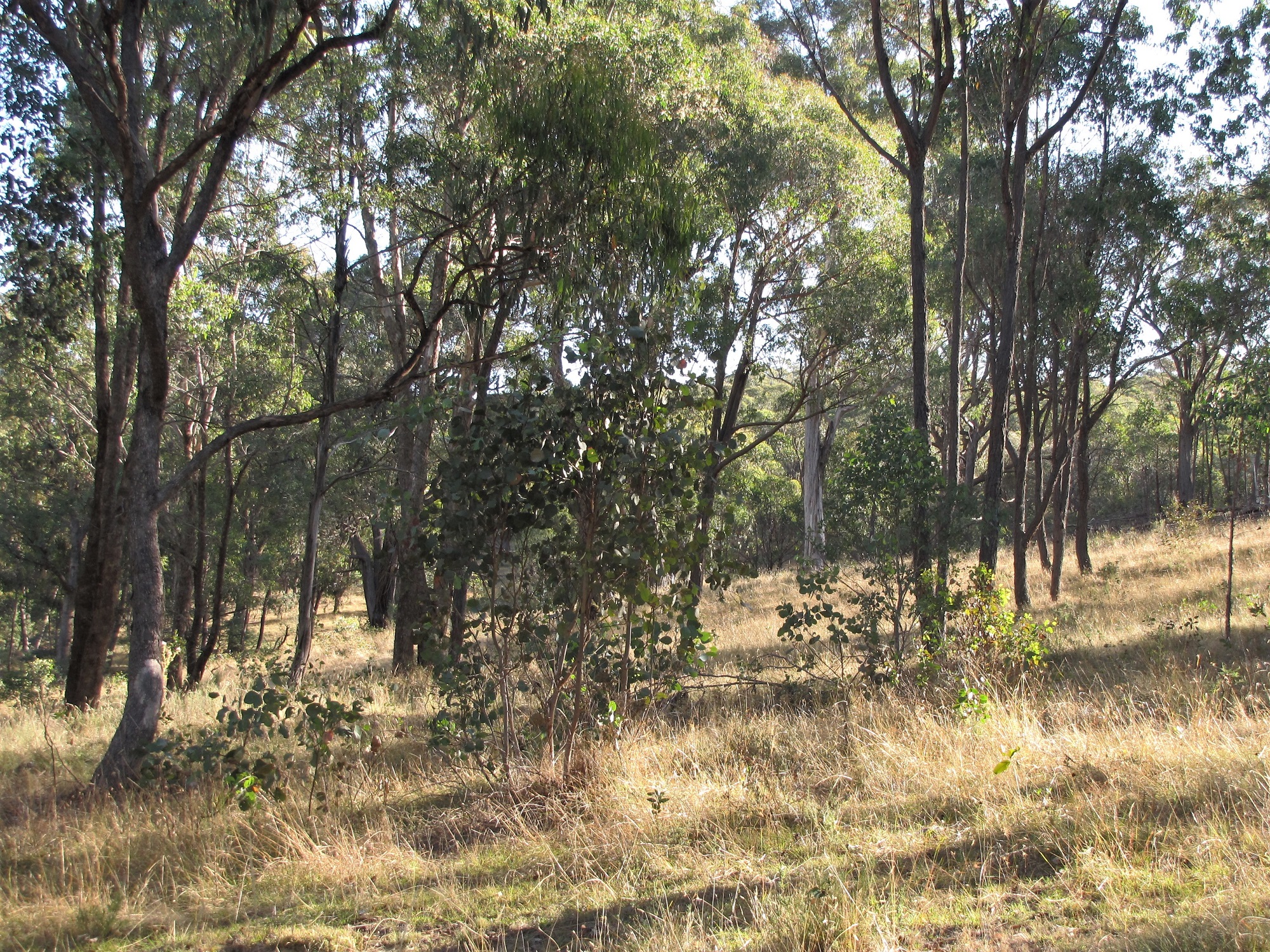Environmental Management
We have an ongoing program of improving the farm’s natural environment and the sustainability of our beef production. Historical ringbarking and clearing created soil erosion. To counter this, we are tree planting and fencing to foster natural regeneration around creeks and erosion gullies. Fallen timber is placed to slow down runoff in watercourses. Contour banks are used to redirect water flows away from erosion areas.
The removal of sheep 30 years ago has resulted in remarkable regrowth of native trees and improved ground cover. At least thirty percent of the property has tree cover, including red gum, grey and yellow box and stringybark, with some native pine and kurrajong. Most of the forested area is fenced and grazed infrequently. The wild and rocky Mulgowrie Creek along the northern boundary is fenced off to keep stock out.
As well as enhancing the local environment and providing more habitat for native plants and animals, the conservation areas on our farm more than offset any contribution to greenhouse gases from our beef production. We select bulls that have a low Net Feed Intake, that is, they are efficient in their use of feed. As well as improving carrying capacity, this means each animal produces less methane into the atmosphere.
We are off-grid and have been totally reliant on solar energy for thirty years.
In our early years here the farm would turn purple in spring with flowering Paterson’s Curse. Gullies were overrun with blackberries and thistles were widespread, some up to two metres high. Over the years we have eliminated more than 90 percent of these, assisted by better grass cover. More recently St John’s Wort was brought into the area, rapidly spread into our paddocks and must be spot sprayed every year.
We do not agree with the view that harmful weeds can be left uncontrolled. There is strong observational evidence that many species spread until they become dominant. In our region there are large areas where thistles, blackberries or St John’s Wort are close to being a monoculture, taking valuable land out of production. Unfortunately the relevant authorities are not active enough in enforcing weed control.




| Click here to return to the menu |

